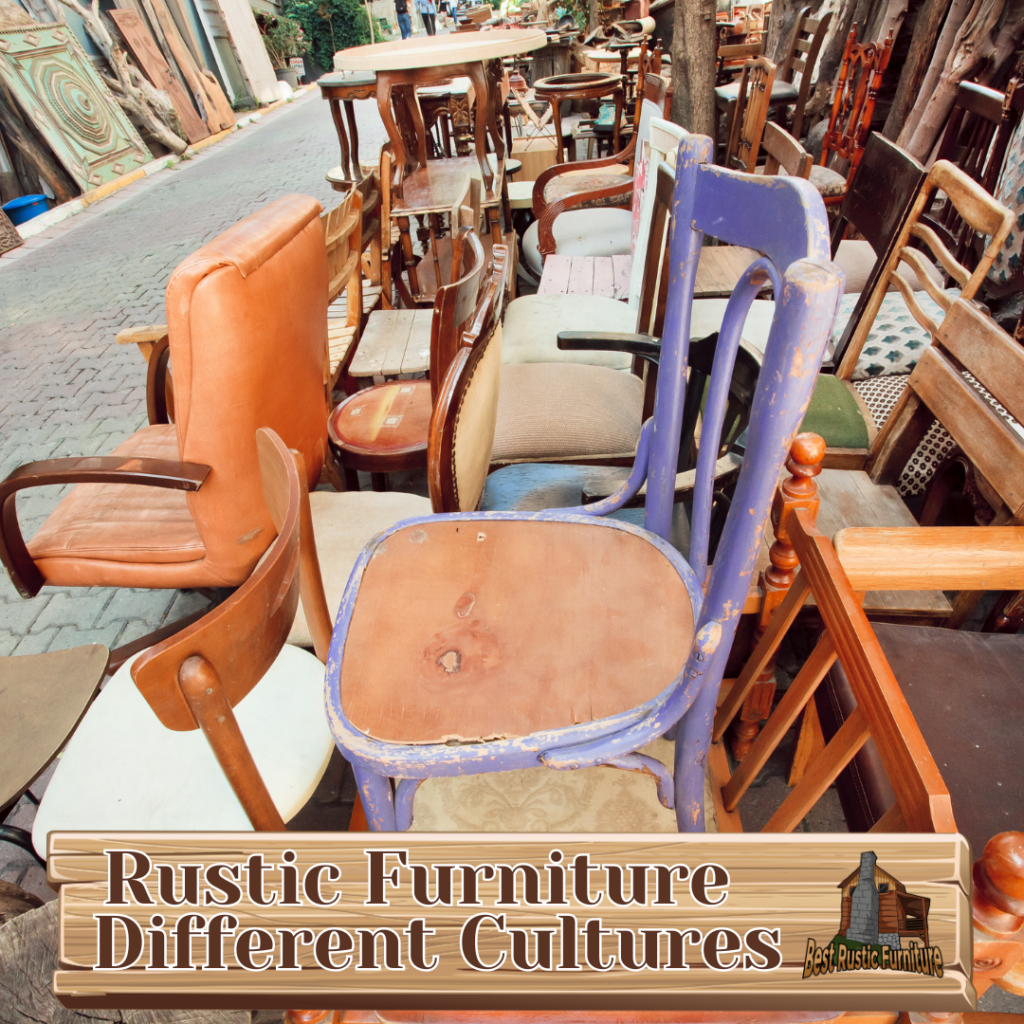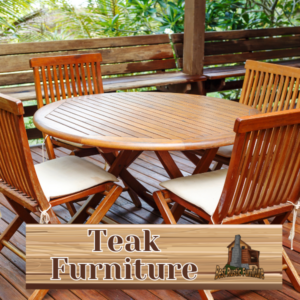
Rustic furniture is a distinct style of furniture that embraces natural materials and an authentic, rough-hewn aesthetic. This article delves into the fascinating world of rustic furniture, exploring its presence and significance in different cultures around the world.
Rustic Furniture: An Introduction
Rustic Furniture in Different Cultures
Rustic Furniture in Western Culture
Rustic Furniture in Eastern Culture
Styles and Characteristics of Rustic Furniture
Materials Used in Rustic Furniture
Design Elements of Rustic Furniture
The Cultural Significance of Rustic Furniture
Rustic Furniture as Cultural Heritage
Symbolism and Meaning in Rustic Furniture
Modern Adaptations and Influences of Rustic Furniture
Contemporary Rustic Furniture Designs
Global Influence on Rustic Furniture
By examining the styles, characteristics, and materials used in rustic furniture, we can gain a deeper understanding of its cultural significance. Rustic furniture often holds a special place within a culture, representing tradition, heritage, and a connection to nature. It can also carry symbolic meaning, reflecting the values and beliefs of a particular community or region.
In addition, this article explores modern adaptations of rustic furniture and the influences of globalization. Contemporary rustic furniture designs blend traditional elements with contemporary styles, creating a unique fusion of old and new. Furthermore, the global exchange of ideas and materials has contributed to the evolution of rustic furniture, incorporating diverse influences from different cultures.
By exploring rustic furniture in its various cultural contexts and understanding its styles, characteristics, and cultural significance, we can develop a deeper appreciation for this timeless and fascinating form of craftsmanship.
Key takeaway:
- Rustic furniture in different cultures reflects unique design elements and materials: Western and Eastern cultures have distinct styles and characteristics in their rustic furniture, utilizing different materials and design elements to create culturally significant pieces.
- Rustic furniture represents cultural heritage and symbolism: Rustic furniture holds cultural significance, representing the traditions, history, and values of a particular culture. It often carries symbolic meanings that connect to the cultural identity and beliefs of the people who create and use it.
- Modern adaptations and global influences on rustic furniture: Contemporary rustic furniture designs and the influence of global aesthetics have led to the evolution of rustic furniture styles. These adaptations blend traditional rustic elements with modern design concepts, creating unique pieces that appeal to a wider audience.
Rustic Furniture in Different Cultures
Rustic furniture, a timeless craft, finds its unique expression in various cultures worldwide. In this insightful journey, we’ll explore the charm of rustic furniture across different cultures. Brace yourself to discover the distinctiveness of rustic furniture in Western and Eastern cultures, each with its own captivating tale and cultural influences. Prepare to be enchanted by the diverse styles, materials, and techniques employed in the creation of these rustic masterpieces.
Rustic Furniture in Western Culture
Rustic Furniture in Western Culture is synonymous with its natural and rugged appearance, traditionally crafted from materials such as wood, iron, and stone. Drawing inspiration from the rugged landscapes and pioneer roots of the American West, Western rustic furniture showcases simple yet robust construction, incorporating elements like log frames or distressed finishes. This particular style of furniture remains highly sought-after in cabins, lodges, and ranch-style homes, as it elicits a comforting and nostalgic ambiance. Moreover, rustic furniture in Western culture truly embodies the spirit of exploration and the innate connection to nature that is deeply embedded in the Western lifestyle. Traceable back to the early settlers, the origin of Western rustic furniture harks back to their resourcefulness in fashioning functional and long-lasting furniture from the limited materials available in the frontier.
Rustic Furniture in Eastern Culture
In Eastern cultures, rustic furniture holds a significant place as a reflection of tradition and craftsmanship. Rustic furniture in Eastern culture is known for incorporating natural materials, such as bamboo and reclaimed wood, into its construction. The design elements of rustic furniture often emphasize simplicity, harmony, and a deep connection to nature. From intricately carved teak chairs in India to minimalist tatami mats in Japan, each piece tells a unique story and embodies the cultural values and aesthetic sensibilities of the region. With its timeless appeal, rustic furniture in Eastern culture stands as a testament to the enduring beauty of traditional craftsmanship.
Fun Fact: In Chinese culture, rustic furniture is believed to bring good luck and wealth to the home.
Styles and Characteristics of Rustic Furniture
Discover the captivating world of rustic furniture as we explore the unique styles and characteristics that define this art form. From the materials used to the design elements incorporated, we’ll uncover the secrets behind the creation of these timeless pieces. Prepare to delve into the use of natural elements, cultural influences, and the rustic charm that makes this furniture so beloved across different cultures. Get ready to embark on a journey through the enchanting world of rustic furniture!
Materials Used in Rustic Furniture
The materials used in rustic furniture play a crucial role in defining its character and durability. Common materials seen in rustic furniture include:
- Wood: Typically, hardwoods such as oak, pine, and cedar are used for their natural beauty and strength in rustic furniture.
- Reclaimed Wood: Salvaged wood from old barns or buildings adds a unique charm to rustic furniture and is environmentally friendly.
- Wrought Iron: Used for frames and accents, wrought iron provides a sturdy and rustic element in rustic furniture.
- Natural Fibers: Materials like rattan, jute, and hemp are often used in rustic furniture to achieve a warm and organic feel.
- Stone: In some cases, stones like granite or slate are incorporated into rustic furniture for tabletops or accents.
By carefully choosing and combining these materials, artisans create rustic furniture pieces that are not only aesthetically pleasing but also durable and enduring.
Design Elements of Rustic Furniture
Design elements are essential in defining the aesthetic appeal and charm of rustic furniture. These elements not only showcase the unique characteristics and craftsmanship of this style but also play a crucial role. When exploring rustic furniture, it is important to consider the following key design elements:
- Natural Materials: Rustic furniture embraces the use of raw and organic materials such as wood, stone, and metal. These materials effectively exhibit the natural beauty and texture that rustic furniture is known for.
- Handcrafted Details: To add authenticity and an artisanal touch, hand-carved ornaments, intricate joinery, and distressed finishes are common features found in rustic furniture.
- Textured Surfaces: The rough-hewn surfaces, saw marks, and weathered patina of rustic furniture pieces reflect their ruggedness and history, enhancing their rustic charm.
- Simple Silhouettes: Rustic furniture is characterized by clean lines, minimal embellishments, and simple yet sturdy silhouettes. This emphasis on function and practicality is a hallmark of rustic design.
- Natural Colors: Earthy tones like warm browns, deep reds, and faded blues are often incorporated into rustic furniture, creating a harmonious blend with the surrounding natural environment.
The Cultural Significance of Rustic Furniture
Rustic furniture showcases the rich cultural tapestry of different societies, offering a glimpse into their traditions and values. In this exploration of the cultural significance of rustic furniture, we’ll uncover the profound connections between craftsmanship and heritage. Get ready to delve into the sub-sections that shed light on rustic furniture as cultural heritage and the symbolism and meaning embedded within these remarkable pieces. Brace yourself for an enlightening journey into the world of rustic furniture, where history and artistry intertwine.
Rustic Furniture as Cultural Heritage
Rustic furniture, as a cultural heritage, holds a special place in many societies. Passed down through generations, it not only offers a glimpse into the history, traditions, and craftsmanship of a particular culture, but also serves as a tangible representation of their roots and cultural identity. This type of furniture showcases the unique style and materials used in different regions, telling stories of rural life and the profound connection to nature. By preserving traditions and memories, rustic furniture keeps the cultural heritage alive for future generations to cherish and appreciate. The Amish community in the United States exemplifies this commitment to simplicity, craftsmanship, and self-sufficiency through their longstanding tradition of crafting rustic furniture. They have played a significant role in maintaining this cultural heritage, and their furniture represents a timeless testament to their values and way of life.
Symbolism and Meaning in Rustic Furniture
Symbolism and meaning in rustic furniture play a significant role, reflecting cultural values and traditions. The design elements and materials utilized in rustic furniture often carry symbolism that connects to nature, spirituality, or historical events. For instance, carved animal motifs can symbolize protection or strength, while the utilization of reclaimed wood signifies sustainability and a connection to the past. Comprehending the symbolism and meaning behind rustic furniture enhances the depth and appreciation of these pieces, transforming them into more than just functional items. Exploring the cultural significance of rustic furniture allows us to connect with different traditions and acquire a deeper understanding of their heritage. So, the next time you encounter rustic furniture, take a moment to admire the hidden symbolism and meaning behind it.
Modern Adaptations and Influences of Rustic Furniture
Discover the captivating world of rustic furniture as we delve into the realm of modern adaptations and influences. From contemporary designs that blend elements of tradition and innovation to the global impact that has transformed rustic furniture, join us on a journey where old meets new and cultures intertwine. Get ready to explore the fascinating realm of contemporary rustic furniture and the profound global influence that has shaped this beloved art form.
Contemporary Rustic Furniture Designs
Contemporary rustic furniture designs are a sought-after choice for those who desire a blend of traditional charm and modern style. These designs combine the appeal of rustic elements with contemporary aesthetics, resulting in furniture that is both charming and stylish. Here are some key features that define contemporary rustic furniture designs:
| – Use of reclaimed materials: | One prominent feature of contemporary rustic furniture is the use of reclaimed wood or other materials. This incorporation of reclaimed materials not only adds character to the furniture but also promotes sustainability. |
| – Clean lines and minimalistic design: | While preserving the rustic feel, contemporary designs emphasize clean lines and a more minimalistic approach. This combination creates furniture that seamlessly fits into modern living spaces. |
| – Mixing textures and finishes: | An effective technique employed in contemporary rustic furniture is the artful combination of different textures and finishes. By incorporating contrasting elements such as wood and metal, these designs add visual interest and depth to the furniture. |
| – Functional and practical: | Contemporary rustic furniture prioritizes functionality. Each piece is carefully crafted to serve a practical purpose in modern living spaces, ensuring that they blend seamlessly with the practical needs of today’s lifestyle. |
| – Integration of technology: | In keeping with the demands of modern life, many contemporary rustic furniture designs seamlessly integrate technology. Built-in charging ports and cable management systems are among the features incorporated into these designs, seamlessly blending technology with the rustic charm. |
Global Influence on Rustic Furniture
The impact of global influence on rustic furniture is evident in the diverse styles and designs found across different cultures. In Western culture, the utilization of reclaimed wood and natural finishes reveals the influence of rustic furniture. On the other hand, Eastern culture often embraces rustic furniture that incorporates intricate carvings and bamboo materials. This global influence has sparked the rise of contemporary rustic furniture designs that seamlessly blend traditional elements with modern aesthetics. As a result of the global market for rustic furniture, there is a wider and more varied selection of styles and designs available, thanks to the exchange of ideas and techniques. The continuous global influence on rustic furniture plays a pivotal role in shaping its evolution and increasing its popularity worldwide.
Rustic Furniture in Different Cultures:
- ✅ Rustic furniture is associated with country living, nature, and simplicity. (Source: Our Team)
- ✅ It can include elements of cabin or mountain home decor, as well as farmhouse or ranch aesthetics. (Source: Our Team)
- ✅ Rustic furniture is characterized by its natural and simple appearance, using materials such as wood, stone, and wrought iron. (Source: Our Team)
- ✅ There are several types of rustic style furniture, including farmhouse style, cabin style, mountain style, hacienda style, and Mediterranean style. (Source: Our Team)
- ✅ Rustic furniture tends to have a more natural and organic appearance with aged finishes and decorative details. (Source: Our Team)
Frequently Asked Questions
What are the different rustic styles for furniture?
Rustic styles for furniture can include farmhouse style, cabin style, mountain style, hacienda style, and Mediterranean style. Each style has its own unique characteristics and finishes.
What materials are commonly used in rustic furniture?
Common materials used in rustic furniture include wood, stone, wrought iron, and other natural materials. These materials give rustic furniture its natural and simple appearance.
What is native made rustic furniture?
Native made rustic furniture refers to furniture made by Native Americans in the US and First Nations tribes in Canada. Native people traditionally transformed materials found in nature into utilitarian objects for daily life.
When did the rustic furniture movement begin?
The rustic furniture movement began in the mid- to late-1800s as a revival of European styles introduced during the Romantic movement. It became popular in America by 1840 and was produced by several American firms in the 1870s.
Where can I find native-made rustic furniture?
Native-made rustic furniture can be found in souvenir shops, sporting lodges, and itinerant encampments in rusticator havens. Native people either went where the tourists were or the tourists came to them.
What is the significance of rustic furniture in creating a warm and inviting atmosphere?
Rustic furniture is associated with country living, nature, and simplicity. Its natural and organic appearance, aged finishes, and decorative details create a relaxed and welcoming atmosphere in any home.






